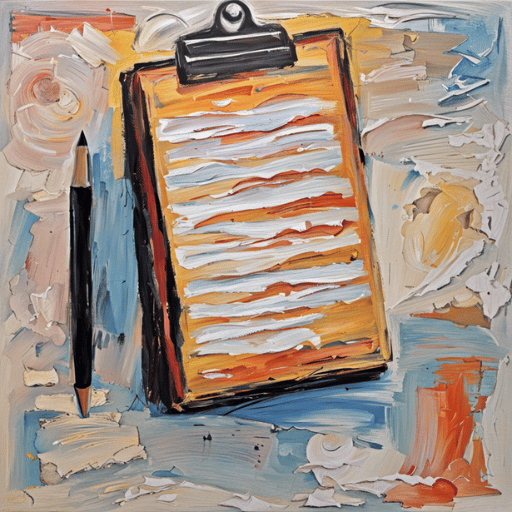Ethnographic Materials Conservator SOPs
Creating Standard Operating Procedures for your Ethnographic Materials Conservator work can be difficult and take time. That’s why we’ve created these example Ethnographic Materials Conservator SOPs so you can jumpstart your SOP creation process. We want to help you set up your Conservation systems and processes by taking these sample SOPs and building out your own SOPs template library. By having all your Conservation procedures in one place, your team will have the information they need at all times. Let’s look at some Ethnographic Materials Conservator SOP examples.
Ethnographic Materials Conservator SOP Examples
1. Documentation and Condition Assessment SOP: This SOP outlines the process of documenting and assessing the condition of ethnographic materials. The purpose is to create a comprehensive record of the object’s current state and identify any existing damage or deterioration. The scope includes all ethnographic materials received for conservation. The conservator is responsible for conducting the documentation and condition assessment. This SOP references the Object Handling and Transport SOP for guidelines on safe handling procedures.
2. Cleaning and Surface Preparation SOP: The purpose of this SOP is to provide guidelines for cleaning and preparing the surfaces of ethnographic materials for conservation treatment. It includes instructions on selecting appropriate cleaning agents, testing them on inconspicuous areas, and applying them safely. The scope covers all ethnographic materials requiring cleaning. The conservator is responsible for performing the cleaning and surface preparation. This SOP references the Documentation and Condition Assessment SOP for information on the object’s condition before cleaning.
3. Conservation Treatment SOP: This SOP outlines the procedures for conserving ethnographic materials, including stabilization, repair, and restoration techniques. The purpose is to ensure the appropriate and ethical treatment of objects while preserving their cultural and historical significance. The scope includes all ethnographic materials requiring conservation treatment. The conservator is responsible for performing the conservation treatment. This SOP references the Documentation and Condition Assessment SOP for information on the object’s condition before treatment.
4. Environmental Monitoring and Control SOP: The purpose of this SOP is to establish protocols for monitoring and controlling the environmental conditions in the conservation workspace. It includes guidelines for temperature, humidity, light levels, and pest control. The scope covers the entire conservation workspace where ethnographic materials are handled and stored. The conservator is responsible for monitoring and maintaining the environmental conditions. This SOP references the Object Handling and Transport SOP for guidelines on safe handling during environmental monitoring.
5. Storage and Display SOP: This SOP provides guidelines for the proper storage and display of ethnographic materials to ensure their long-term preservation and safe exhibition. It includes instructions on selecting appropriate storage materials, arranging objects, and implementing security measures. The scope covers all storage and display areas for ethnographic materials. The conservator is responsible for overseeing the storage and display practices. This SOP references the Documentation and Condition Assessment SOP for information on the object’s condition before storage or display.
6. Emergency Response and Disaster Recovery SOP: The purpose of this SOP is to establish protocols for responding to emergencies and recovering ethnographic materials in the event of a disaster. It includes instructions on emergency preparedness, salvage techniques, and documentation of damage. The scope covers all emergency situations and potential disasters that may affect ethnographic materials. The conservator is responsible for coordinating the emergency response and disaster recovery efforts. This SOP references the Documentation and Condition Assessment SOP for information on the object’s condition before and after a disaster.
7. Ethical Guidelines and Code of Conduct SOP: This SOP outlines the ethical guidelines and code of conduct that the ethnographic materials conservator must adhere to. It includes principles of professional conduct, respect for cultural heritage, and responsible decision-making. The scope covers all aspects of the conservator’s work related to ethnographic materials. The conservator is responsible for upholding the ethical guidelines and code of conduct. This SOP references relevant professional codes of ethics and standards.
8. Research and Documentation SOP: The purpose of this SOP is to establish procedures for conducting research and documenting the cultural and historical context of ethnographic materials. It includes guidelines for literature review, interviews, and archival research. The scope covers all ethnographic materials requiring research and documentation. The conservator is responsible for conducting the research and documenting the findings. This SOP references the Documentation and Condition Assessment SOP for information on the object’s physical condition and the Ethical Guidelines and Code of Conduct SOP for considerations of cultural sensitivity during research.
9. Risk Assessment and Mitigation SOP: This SOP outlines the process of conducting risk assessments to identify potential risks to ethnographic materials and implementing mitigation strategies. The purpose is to minimize the likelihood of damage or loss during handling, storage, and transportation. The scope covers all aspects of the conservation process for ethnographic materials. The conservator is responsible for conducting risk assessments and implementing mitigation strategies. This SOP references the Object Handling and Transport SOP for guidelines on safe handling procedures and the Storage and Display SOP for guidelines on safe storage practices.
10. Training and Professional Development SOP: The purpose of this SOP is to establish procedures for the ongoing training and professional development of the ethnographic materials conservator. It includes guidelines for attending workshops, conferences, and staying updated with the latest conservation techniques and research. The scope covers the conservator’s continuous learning and professional growth. The conservator is responsible for identifying training opportunities and participating in professional development activities. This SOP references relevant professional organizations and resources for training and development opportunities
Ethnographic Materials Conservator SOP Templates
Looking for SOP templates for your Ethnographic Materials Conservator work? We’ve got you covered. You can build out your company SOPs using the sample SOP information above (added to our template) or our team can put together a starter SOPs template based on your Ethnographic Materials Conservator work. Get in touch if you’ve got questions about the quickest way to build out your Conservation SOPs library.
